As a new parent, you may wonder what diaper size to buy for your little one. With so many options available, it can be overwhelming to choose the right one.
We will cover everything you need to know about the most common diaper sizes and how to choose the perfect fit for your baby. Will discuss the different sizes available based on age and weight and factors that may affect your baby’s diaper size needs.
We will touch upon popular brands and their sizing options, signs that indicate it’s time to switch sizes, and tips for finding the ideal fit. Lastly, we will also cover overnight diapers and swim diaper sizes so that you can decide when to buy them.
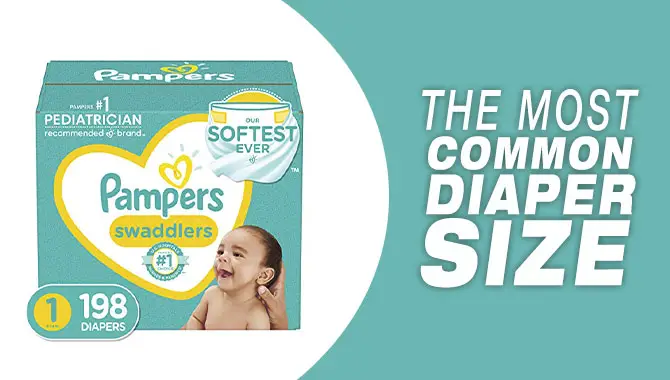
Common Diaper Sizes By Age And Weight
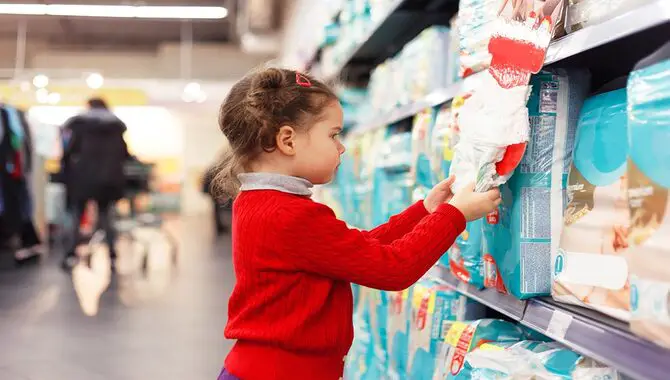
Diaper sizes are determined primarily by weight and not age. Popular brands like Pampers, Kirkland, and Hello Bello provide charts for reference to help parents determine which size is best for their babies. Size one diapers usually fit babies weighing 8-14 pounds, while size 6 diapers are intended for babies over 35 pounds.
Parents should refer to the brand’s website for accurate sizing recommendations. Usually, diaper sizes range from preemie to size 7. It’s important to remember that every baby is different, so it’s essential to check the diaper’s fit frequently and adjust accordingly to prevent leaks or discomfort.
1. Newborn Diaper Sizes
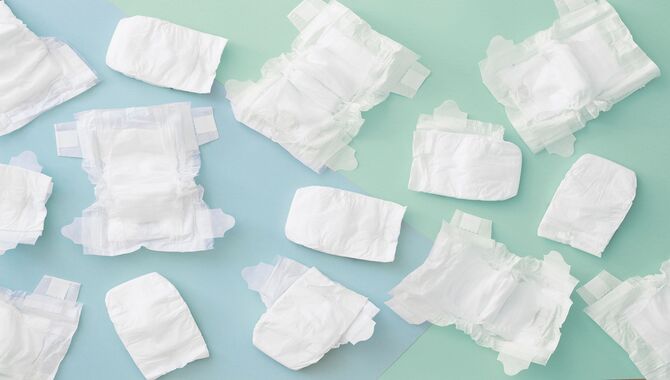
Newborn diapers are designed for infants weighing less than 10 pounds and are typically used for one month or less. Diaper sizes are determined by weight, with newborn diapers fitting babies up to 10 pounds. However, sizing can vary between brands, so it’s important to consult a baby diaper size chart to ensure the proper fit. Some diaper brands even offer preemie diapers for babies weighing under 6 pounds.
It’s important to try out multiple diaper brands and styles to find what works best for your baby, as sizing can vary, and some baby weights may overlap between two different sizes. Proper fitting diapers are essential for protecting against leaks and ensuring your baby’s comfort. By finding the right newborn diaper size, you can ensure that your little one is happy and dry.
2. Size 1 Diaper
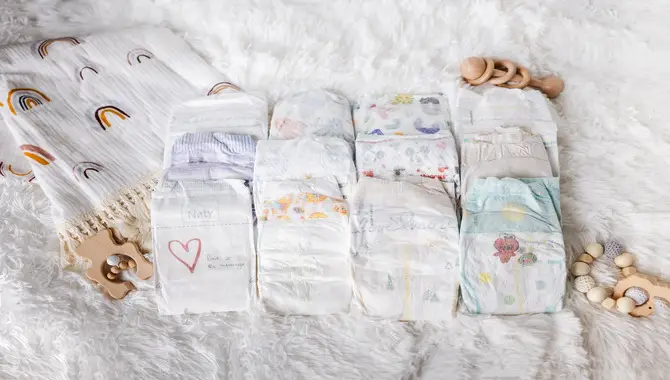
Regarding common diaper sizes, size 1 is often the first size parents need for their newborns. Size 1 diapers are designed to fit babies up to 10 pounds but less than 35 pounds by weight. Boys typically transition to size 1 diaper around 4 weeks old, while girls do so around 6 weeks.
As babies grow, they will eventually need larger diaper sizes. Girls typically reach size 2 diapers between 4-5 months, while boys do so around 3-4 months. Parents must keep track of their baby’s weight and age to ensure they use the appropriate diaper size.
When purchasing diapers in bulk, parents may prefer bags over boxes for newborn size to prevent over-ordering. Some brands, such as Pampers, offer a supplement of specific sizes, such as Size 1, and even have a Size 7 option for older kids who still need nighttime protection.
3. Size 2 Diapers
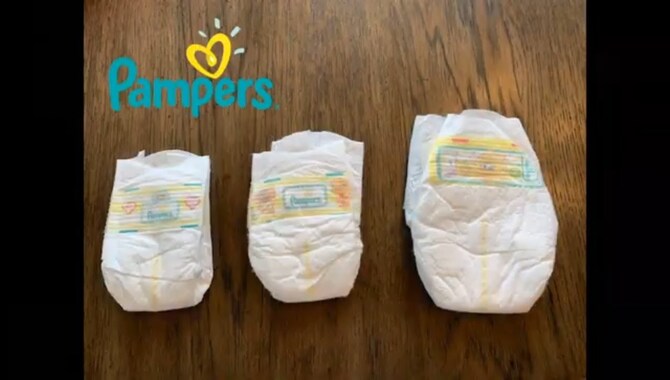
When it comes to diaper sizes, Size 2 is a common choice for babies who weigh between 10-35 lbs. This size typically lasts up to three months and requires around five packs of 142 diapers. Choosing the right size is important to avoid diaper leaks and health risks such as diaper rash.
In addition to regular diapers, disposable swim diapers are also available in small, medium, and large sizes. These sizes usually correspond to regular diaper sizes 3-6, but it’s important to check the sizing guidelines on the box as they may differ from regular diaper sizing. Choosing the right size ensures your baby stays comfortable and protected while enjoying time in the water.
4. Size 3 Diapers
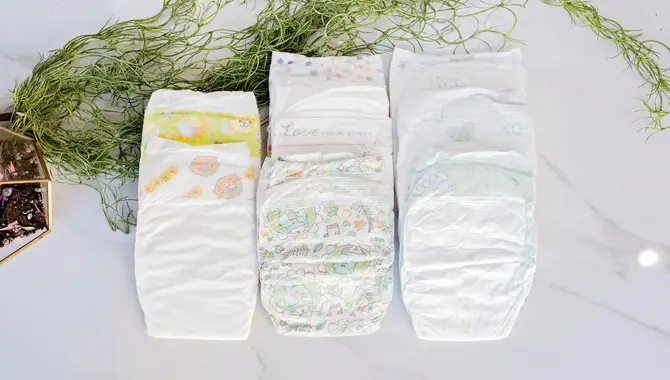
When choosing the right diaper size for your baby, it’s important to consider their age and weight. Size 2 diapers are designed for babies between 12-18 pounds, while size 3s fit those between 16-28 pounds. While babies can wear a size 3 diapers up to the age of 24 months, growth rates can vary. It’s best to stock up on the appropriate sizes before they arrive.
It’s also worth noting that disposable swim diapers come in small, medium, and large sizes, equivalent to diaper sizes 3-6. Size 3 diapers can fit babies up to 35 pounds, but it’s important to check weight ranges on the box.
To avoid leaks or blowouts, consider switching to size 3 diapers when your baby is approaching 16-18 pounds. Paying attention to your baby’s weight and choosing the appropriate diaper size will help keep them comfortable and dry throughout the day.
Brands With The Most Popular Diaper Sizes
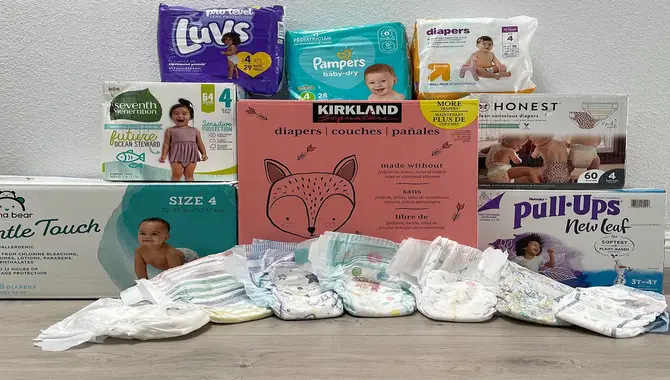
Regarding the most common diaper size, most brands offer sizes Newborn through 6, with some also offering a Preemie size for babies under six pounds. While big-box brands like Target and Kirkland perform just as well as popular brands like Pampers and Huggies, Pampers does offer larger sizes, including size 7 for toddlers over 41 pounds.
In performance tests, Kirkland Signature Supreme and Pampers Pure were the only diapers that reached the top 10. It’s worth noting that while smaller diaper sizes offer more diapers per box, larger sizes cost more per diaper. Ultimately, choosing a diaper brand and size that works best for your baby’s needs is important.
Factors Affecting Diaper Size Needs
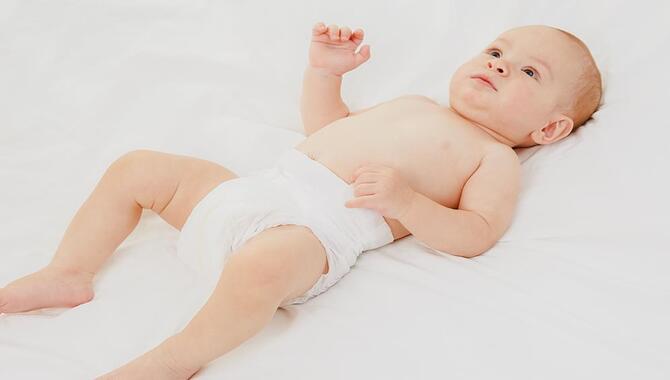
When it comes to the most common diaper size, choosing a size that fits your baby comfortably is important. Too small diapers can leave marks on your baby’s skin and cause discomfort, while too big can lead to leaks and blowouts.
To determine the right diaper size for your baby, consider their weight rather than age. Using a diaper size chart or choosing a size based on weight can help prevent discomfort and mishaps. If you notice red marks or a snug fit caused by the diaper, it may be too small and cause leaks and blowouts.
Similarly, frequent blowouts could indicate that the diaper is too big or too small. By choosing the right diaper size for your little one, you can ensure they stay comfortable and dry throughout the day.
Choosing The Right Diaper Size For Your Baby
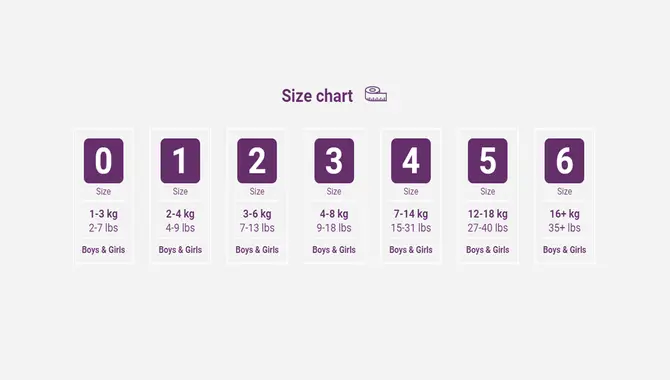
Choosing the right diaper size is crucial to keeping your baby comfortable and clean. Diaper sizes are based on weight, not age, and generally fall within a given weight range. Newborns typically wear diapers that fit babies weighing less than ten pounds for around a month or less. Sizes one and two are the most commonly used diaper sizes, while sizes three and four are used for much longer.
Choosing the correct diaper size is essential to avoid leaks and blowouts. It can be determined by checking for a good fit around the waist and legs, preventing leaks, and ensuring comfort for your baby.
If the diaper leaves gaps or is too tight, it’s time to move up a size. Similarly, it may be time for a bigger size if you notice frequent leaks or blowouts. Choosing the right diaper size lets you keep your baby happy, healthy, and dry all day!
Tips For Finding The Perfect Fit
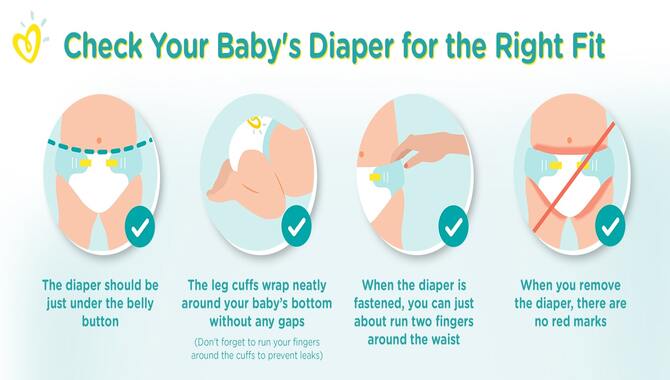
Choosing the right diaper size for your baby is important for comfort and functionality. It’s recommended to choose a diaper size based on weight rather than age and to use size charts provided by diaper manufacturers to find the best fit.
A properly fitting diaper can reduce blowouts and leaks, so checking for any red marks or occasional leaks is important. However, it’s also important not to get a diaper size that is too snug, as this can cause discomfort and irritation. Ensure the diaper doesn’t fit too low at the back, and check the baby’s legs and waist for snugness. The diaper should also be at least 2 inches below the navel.
When looking for the perfect fit, consider environmentally-friendly options and brands that prioritize skin-friendly materials. Finding the right diaper size will ensure you and your baby are comfortable throughout the day.
Overnight Diapers And Swim Diapers Sizes

When it comes to swimming diapers, they are typically sized differently than regular diapers. Most swim diapers come in small, medium, and large sizes, often correlating to sizes 3-5. However, before you purchase, check the manufacturer’s sizing guidelines since weight ranges may differ from regular diapers from the same brand. Another option is Alvababy swim diapers which offer a one-size option that fits babies from 10-40lbs.
While on the topic of diapers, choosing the right size for overnight diapers is also important. It ensures maximum comfort and leak protection for your little one throughout the night. Babyganics swim pants offer sustainable core material to prevent sagging or swelling in water and provide extra comfort for your baby while swimming. When diapering your baby, always ensure that you are using the correct size for their needs to keep them comfortable and happy.
Common Sizes For Overnight Diapers
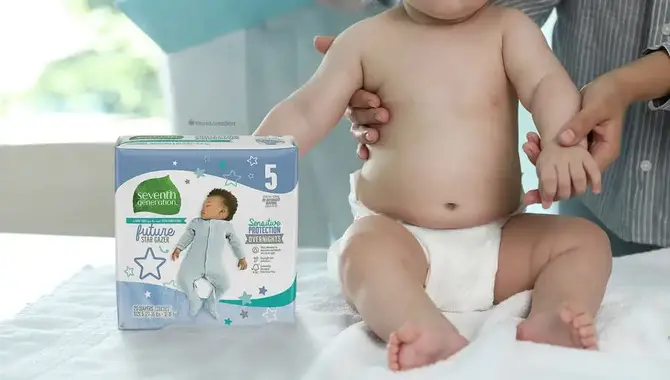
Different brands offer different sizes for overnight diapers to accommodate babies of all ages and sizes. Seventh Generation’s overnight diapers come in various sizes with no added fragrances or lotions, while Pampers offers diaper sizes for older or bigger children with their Pampers Cruisers size 7. It is important to note that durability and leak prevention can vary across diaper brands and sizes.
In addition to overnight diapers, disposable swim diapers are also available in small, medium, and large sizes, usually equivalent to sizes 3-6. However, checking sizing guidelines on diaper boxes is essential to ensure proper fit and leak prevention. Choosing the right diaper size is crucial for comfort and effectiveness in preventing leaks.
Common Sizes Of Swim Diapers
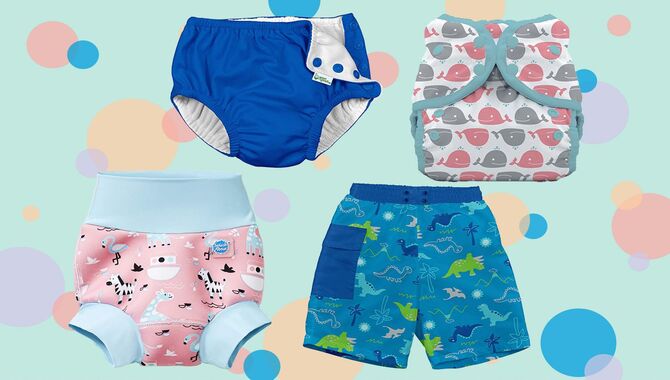
While the most common diaper sizes are important, it’s also helpful to understand sizing for overnight and swim diapers. Swim diapers come in small, medium, and large sizes, with most brands corresponding to diaper sizes 3-6. It’s important to note that swim diapers are not designed to absorb fluids; instead, they are made to contain solid waste while your child is in the water.
Disposable swim diapers are the most commonly used type and can be found under various names worldwide. In Italy, for example, swim diapers are known as “pannolini costuming.” Regarding sizing for swim diapers, most brands offer a range of options that should fit most children comfortably.
Conclusion
Choosing the right diaper size is important for your baby’s comfort and safety. The most common baby diaper size is Size 1, recommended for newborns weighing up to 14 pounds. However, it’s essential to note that every baby is different, and their weight can fluctuate rapidly.
Therefore, you must monitor their growth and check if it’s time to size up or down. Finding the perfect fit for your little one can be a challenge, but with our tips and tricks, you’ll easily choose the right diaper size.
It’s important to remember that every baby is different and may require a different size based on weight and body shape. If you need help determining which diaper size is best for your baby, consult your pediatrician or try a few different sizes to see what works best.
Frequently Asked Questions
How Do I Determine The Right Diaper Size For My Baby?
You should consider their weight and age to determine the right diaper size for your baby. Most diaper brands provide a weight range on their packaging to help you choose the appropriate size.
You can also look for signs indicating your baby may need a larger or smaller size, such as leaks or discomfort. It is important to regularly check and adjust the diaper size as your baby grows to ensure they are comfortable and protected from leaks.
What Are Some Signs That My Baby May Need To Move Up To A Larger Diaper Size?
Some signs that your baby may need to move up to a larger diaper size include frequent leaks or blowouts, red marks or irritation on the skin from tightness, difficulty fastening the diaper tabs, and overall discomfort or fussiness. If you notice these signs, try a larger diaper size to ensure your baby stays comfortable and dry.
Are There Any Potential Risks Or Discomfort Associated With Using A Too-Small Diaper For My Baby?
Using a too-small diaper for your baby can cause discomfort and increase the risk of leaks or blowouts. This can lead to skin irritation, rashes, and even infections. It is important to ensure the diaper fits properly to avoid these issues and keep your baby comfortable and healthy.
How Do I Know If My Baby Needs A Different Diaper Size?
You can tell if your baby needs a different diaper size by checking for signs such as frequent leaks, difficulty fastening the diaper tabs, red marks, irritation on the baby’s skin due to tightness, or the baby is growing out of the current size.
Another sign is if there is a visible gap between the baby’s legs and the diaper. If any of these signs are present, it may be time to switch to a larger size to ensure your baby’s comfort and prevent leaks.
Are There Any Brands That Offer A Wider Range Of Diaper Sizes?
Several brands offer a wider range of diaper sizes to accommodate babies of all shapes and sizes. Some examples include Pampers, Huggies, Luvs, and Seventh Generation. Choosing the right size for your baby is important to ensure maximum comfort and leak protection.


